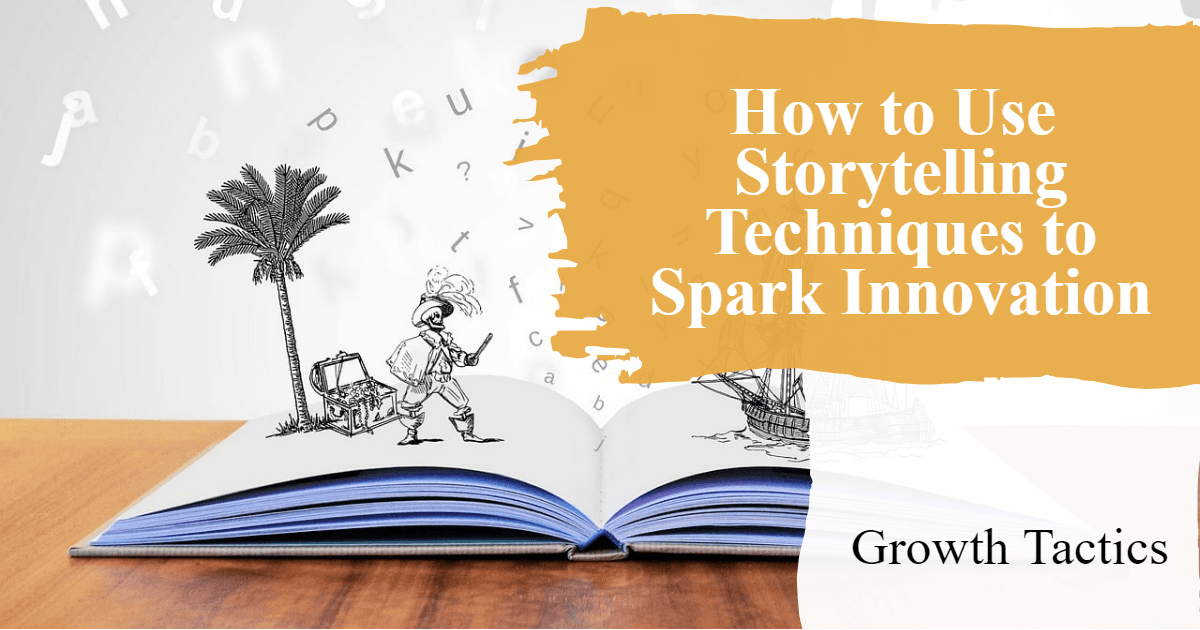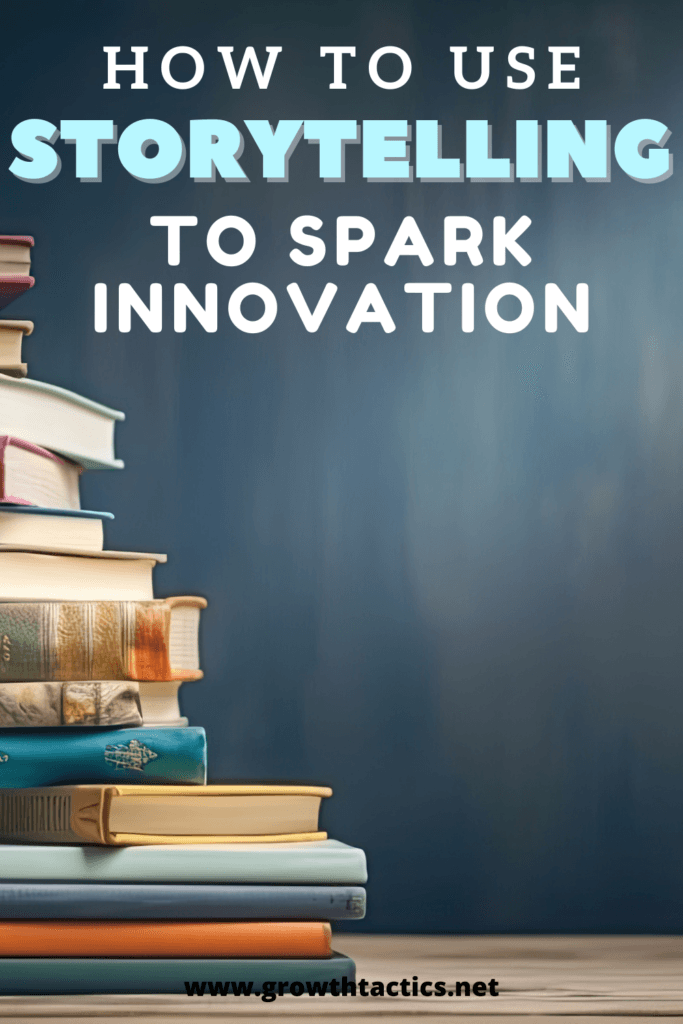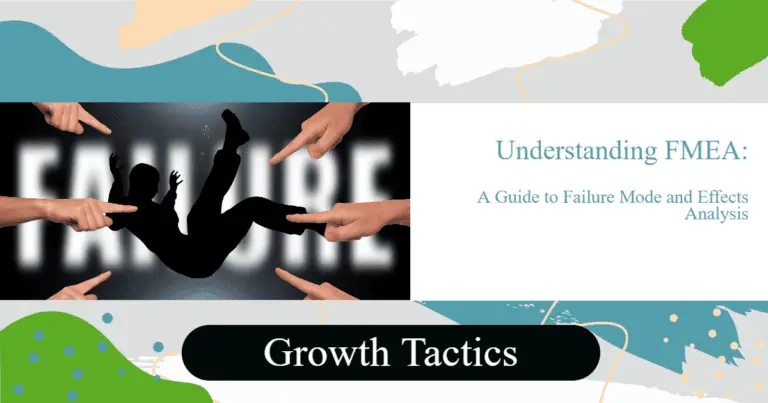Imagine sitting in a meeting, where everyone is tired and uninspired, struggling to come up with new ideas. Now, picture a different scene: the same team is engaged, animated, and bursting with creative solutions, thanks to a simple and powerful tool; storytelling.
In business, storytelling isn’t just for entertainment. It’s a dynamic way to inspire innovation, foster creativity, and drive success. This article will show you how to use storytelling techniques to spark innovation in your team.
Jump To Section
Understanding the Power of Storytelling
Storytelling is more than just telling tales; it’s a strategic tool that can transform how your team thinks and acts. In a business context, storytelling involves using narratives to communicate ideas, values, and vision.
Stories impact us deeply. They can shape our thoughts, influence our emotions, and prompt us to take action. They help us connect on a human level, making complex concepts more relatable and memorable.
Core Storytelling Techniques
Integrating storytelling into your business can be transformative. Here are some key techniques to consider:
The Hero’s Journey
The Hero’s Journey is a timeless narrative structure identified by mythologist Joseph Campbell. It follows a hero who ventures into the unknown, faces and overcomes significant challenges, and returns home transformed. In a business context, this can be incredibly motivating. Here’s how to apply it:
- Identify the Hero: The hero could be your team, a particular project, or a new product. By personifying these elements, you create a focal point for your narrative.
- Set the Adventure: Outline the mission or goal at the beginning. This sets the tone and provides a clear objective.
- Face the Challenges: Describe potential obstacles and hurdles that need to be overcome. This not only prepares your team for what lies ahead but also frames these challenges as part of an adventurous journey.
- Transformation and Return: Once your team has tackled the challenges, highlight the skills and knowledge gained. This reinforces the notion that they are coming back stronger and more capable.
Using the Hero’s Journey framework, you transform mundane tasks into epic quests, making work more engaging and meaningful.
Conflict and Resolution
Conflicts are the heartbeat of any story. They keep the audience engaged and invested. Here’s how to incorporate conflict and resolution into your team’s innovation process:
- Identify the Conflict: Define the main problem or challenge your team is facing. This could be a market gap, a technical issue, or even internal team dynamics.
- Describe the Stakes: Illustrate what is at risk if the conflict isn’t resolved. This helps in underscoring the importance of finding a solution.
- Seek the Resolution: Encourage collaborative brainstorming sessions to solve the problem. This phase is where innovation thrives, as team members propose and evaluate different solutions.
- Celebrate the Win: Once the conflict is resolved, acknowledge the solution and celebrate the achievement. This not only boosts morale but also reinforces a culture of innovative problem-solving.
By framing challenges as conflicts to overcome, you galvanize your team into action, driving them towards creative and effective solutions.
Empathy and Connection
Empathy is a powerful tool in storytelling. It helps in creating a deep emotional connection, which can be very effective in a business setting. Here’s how to leverage empathy and connection to foster innovation:
- Share Personal Stories: Encourage team members to share personal anecdotes related to your projects. This builds a sense of unity and shared experience.
- Customer-Centric Narratives: Create stories around your customers. Highlight their needs, challenges, and how your product or service impacts their lives. This fosters a deeper understanding and empathy among your team for your target audience.
- Develop Character Arcs: Treat your team members as characters in a story. Understand their motivations, challenges, and growth areas. This can help in aligning personal goals with team objectives.
- Use Relatable Scenarios: Present challenges and scenarios your team can relate to. This makes it easier for them to engage emotionally and come up with authentic, innovative ideas.
Empathetic storytelling helps your team connect emotionally with the task at hand, unlocking a drive for creativity and collaboration.
Applying Storytelling to Inspire Innovation
Storytelling isn’t just a tool for engagement—it’s a method to kindle creativity and drive innovation. Here’s how you can integrate storytelling techniques into your team’s innovation process effectively:
Story-Based Problem Solving
Transform the way your team approaches problems by framing them as stories:
- Define the Problem as a Story’s Beginning: Start by presenting the problem as the initial setup in a story. Your team is the protagonist, and the problem marks the beginning of their journey.
- Identify Challenges as Plot Points: Encourage team members to view obstacles as plot points in their hero’s journey. This shifts perception, helping them see problems as opportunities for heroism and ingenuity.
- Encourage Brainstorming as Heroic Adventures: During brainstorming sessions, prompt your team to envision their solutions as the hero’s adventures. This helps them think outside the box and come up with creative, innovative solutions.
- Celebrate Resolutions as Climaxes: Once the problem is solved, celebrate the solution as the story’s climax. This reinforces a positive mindset and demonstrates that overcoming challenges leads to growth and success.
By reframing problems as narratives, your team adopts a proactive, solution-oriented mindset.
Narrative Prototyping
Bring your ideas to life through storytelling:
- Create a Narrative for New Ideas: Instead of merely discussing abstract concepts, build a story around your new idea or product. Describe its creation, development, and impact journey.
- Visualize and Iteratively Refine: Use this narrative to create a prototype journey, where each step towards refinement is a chapter in the story. This makes the process more engaging and helps your team visualize the idea’s progress.
- Use Storyboards and Visuals: Employ storyboards to map out the narrative. This provides a visual guide that makes the abstract concept more tangible and easier to understand.
- Incorporate Feedback as Story Evolutions: Use feedback sessions as opportunities to evolve the story. Adjust and refine the narrative based on input, promoting a dynamic and iterative approach to innovation.
Narrative prototyping makes abstract ideas concrete, fostering a creative environment where concepts can be visually and emotionally explored.
Innovation Labs with Stories
Cultivate a storytelling-friendly environment in your innovation labs:
- Decorate with Storyboards: Adorn your innovation space with visual storytelling tools like storyboards, timelines, and mood boards. This encourages visual thinking and aids in the creative process.
- Encourage Sharing Project Stories: Create a culture where team members regularly share their project stories. This fosters a sense of community and shared purpose, making innovation a collective journey.
- Create Narrative Sessions: Hold dedicated sessions where team members can narrate their experiences, challenges, and achievements. These sessions can spark new ideas and approaches.
- Themed Storytelling Events: Organize events where teams can immerse themselves in creative narratives. This could be through role-playing, mock-ups, or interactive story sessions, providing a fresh perspective on problem-solving.
Transforming your innovation labs into hubs of storytelling not only nurtures imaginative thinking but also creates a collaborative atmosphere rich with innovative potential.
Case Studies
Example 1: Airbnb
Context and Challenge:
Airbnb faced a dual challenge of establishing trust in the concept of short-term home rentals and fostering brand loyalty among its users. The platform needed to innovate to enhance user experience and build a community-driven brand.
Application of Storytelling:
- Customer Stories: Airbnb leveraged storytelling by sharing authentic stories from both hosts and guests. These stories showcased diverse and unique experiences, fostering an emotional connection with the brand. For instance, stories of hosts going above and beyond to provide exceptional hospitality or guests finding a “home away from home” created a sense of trust and belonging.
- Community and Trust: By focusing on these narratives, Airbnb humanized its platform, transforming abstract user data into compelling, relatable stories. This was crucial in helping prospective users overcome reservations about staying in a stranger’s home.
- Feedback Loop: These stories also provided valuable insights into customer experiences, guiding the company in refining its platform to better meet users’ needs. For example, narratives highlighting challenges guests faced led to features like verified IDs and improved customer support.
Result:
The use of storytelling not only enhanced user experience but also drove product innovation. Customer stories directly influenced the development of new features and improvements, solidifying Airbnb’s position as a trusted, community-centric brand in the travel industry.
Example 2: Apple
Context and Challenge:
Apple, renowned for its innovative products, constantly strives to create devices that seamlessly integrate into users’ lives. The challenge was to ensure each new product or feature addressed real user needs and provided an exceptional user experience.
Application of Storytelling:
- Fictional Scenarios: Apple employs storytelling by creating detailed fictional scenarios during product development. The team envisions how different personas might use a product in various situations. For example, when developing the iPhone, Apple crafted scenarios involving everyday activities, professional tasks, and leisure activities.
- Empathy and Insight: These narratives help the team empathize with potential users, uncovering pain points and desires. For instance, envisioning a busy parent using their device to manage daily routines highlighted the need for intuitive interfaces and quick access features.
- Prototyping and Testing: Storytelling also guides the prototyping and testing phases. By continually referring back to these scenarios, Apple ensures that each iteration of the product aligns with the envisioned user experience. This method helps in identifying and resolving potential issues early in the development cycle.
Result:
The storytelling-driven approach has led to the creation of highly user-centric products. Innovative features like Siri, the voice assistant, and the development of an ecosystem where devices seamlessly interact, can be traced back to understanding and anticipating user needs through detailed narratives. This ability to tell and retell user stories has cemented Apple’s reputation for intuitive and innovative product design.
Practical Tips for Implementation
Ready to start? Here are some practical tips to integrate storytelling into your team’s innovation process:
- Host Storytelling Sessions: Encourage your team to share stories related to your projects. Use these sessions to uncover new perspectives and ideas.
- Train in Storytelling: Offer workshops to help your team develop storytelling skills. The more comfortable they are with storytelling, the more effectively they can use it to inspire innovation.
- Create Storyboards: Use storyboards to map out projects and ideas. Visual storytelling tools can help clarify and enhance innovative thinking.
Conclusion
Storytelling is not just about spinning tales; it’s a powerful tool for inspiring innovation. By understanding and applying core storytelling techniques, you can transform your team meetings into vibrant sessions of creativity and problem-solving. Use stories to connect emotionally, frame challenges, and guide your team towards innovative solutions. It’s time to tap into the magic of storytelling and watch your team’s creativity soar.
So, start sharing your stories and see the innovation flow!








